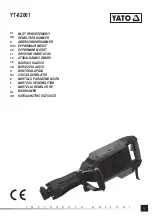
Understanding Tire Pressure and Load Limits
Tire inflation pressure is the level of air in the tire that provides it with load-carrying capacity and affects the overall
performance of the vehicle. The tire inflation pressure is a number that indicates the amount of air pressure–
measured in pounds per square inch (psi)–a tire requires to be properly inflated. (You will also find this number on
the vehicle information placard expressed in kilopascals (kpa), which is the metric measure used internationally.)
Manufacturers of passenger vehicles and light trucks determine this number based on the vehicle's design load limit,
that is, the greatest amount of weight a vehicle can safely carry and the vehicle's tire size. The proper tire pressure
for your vehicle is referred to as the "recommended cold inflation pressure." (As you will read below, it is difficult
to obtain the recommended tire pressure if your tires are not cold.)
Because tires are designed to be used on more than one type of vehicle, tire manufacturers list the "maximum
permissible inflation pressure" on the tire sidewall. This number is the greatest amount of air pressure that should
ever be put in the tire under normal driving conditions.
Checking Tire Pressure
It is important to check your vehicle's tire pressure at least once a month for the following reasons:
1.
Most tires may naturally lose air over time.
2.
Tires can lose air suddenly if you drive over a pothole or other object or if you strike the curb when
parking.
3.
With radial tires, it is usually not possible to determine under inflation by visual inspection.
For convenience, purchase a tire pressure gauge to keep in your vehicle. Gauges can be purchased at tire dealerships,
auto supply stores, and other retail outlets.
The recommended tire inflation pressure that vehicle manufacturers provide reflects the proper psi when a tire is
cold. The term cold does not relate to the outside temperature. Rather, a cold tire is one that has not been driven on
for at least three hours. When you drive, your tires get warmer, causing the air pressure within them to increase.
Therefore, to get an accurate tire pressure reading, you must measure tire pressure when the tires are cold or
compensate for the extra pressure in warm tires.
Steps for Maintaining Proper Tire Pressure
Step 1: Locate the recommended tire pressure on the vehicle's tire information placard, certification label,
or in the owner's manual.
Step 2: Record the tire pressure of all tires.
Step 3: If the tire pressure is too high in any of the tires, slowly release air by gently pressing on the tire
valve stem with the edge of your tire gauge until you get to the correct pressure.
Step 4: If the tire pressure is too low, note the difference between the measured tire pressure and the correct
tire pressure. These "missing" pounds of pressure are what you will need to add.
Step 5: At a service station, add the missing pounds of air pressure to each tire that is underinflated.
Step 6: Check all the tires to make sure they have the same air pressure (except in cases in which the front
and rear tires are supposed to have different amounts of pressure).
If you have been driving your vehicle and think that a tire is underinflated, fill it to the recommended cold inflation
pressure indicated on your vehicle's tire information placard or certification label. While your tire may still be
slightly underinflated due to the extra pounds of pressure in the warm tire, it is safer to drive with air pressure that is
slightly lower than the vehicle manufacturer's recommended cold inflation pressure than to drive with a significantly
Gravity Tender V1.0
21
Содержание Gravity Tender V1.0
Страница 12: ...Tire Safety Information Gravity Tender V1 0 12 ...
Страница 31: ...Machine Measurements Gravity Tender V1 0 31 ...
Страница 38: ...Troubleshooting Gravity Tender V1 0 38 ...
Страница 40: ...ELECTRONICS Gravity Tender V1 0 40 ...
Страница 44: ...Parts Diagrams Gravity Tender V1 0 44 ...
Страница 63: ...CLAIM FILE Defect Gravity Tender V1 0 63 ...
















































